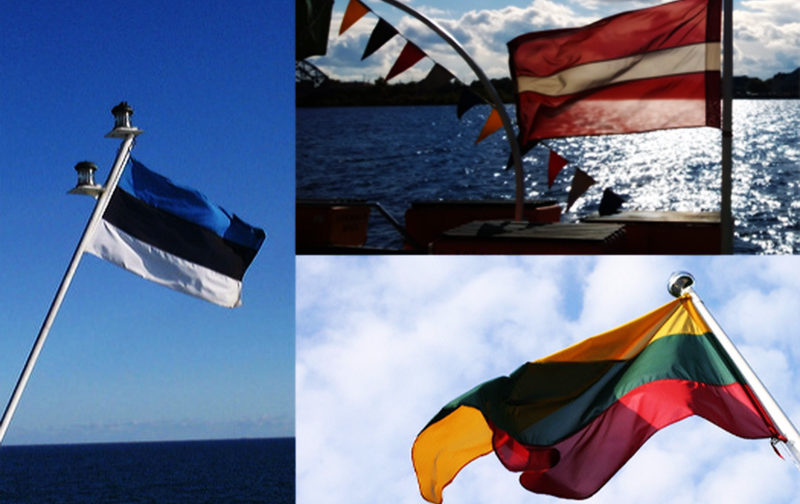
The flags are not only a way to show identity, but they also hide interesting stories about a country’s origins. The flags of the Baltic Countries, Lithuania, Latvia and Estonia, had to be hidden for too many times due to occupations, but happily they can now shine for their proud people. Find out the secrets behind them!
Flag of Lithuania
Three horizontal bands form the Lithuanian Flag: the first yellow, the middle green and the last one red. It adopted in 1918, and readopted after the Soviet occupation, in 1989. Its simple design symbolizes important features of the country: the yellow color represents the sun and prosperity; the green, the forests, nature and countryside of the country, as well as the concepts of liberty and hope. Finally, the red is stands for the blood and bravery of those who died fighting for Lithuania.
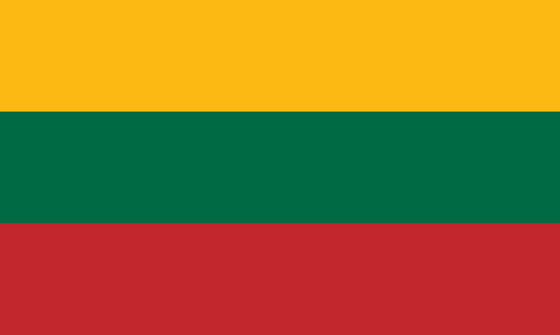
Flag of Lithuania. Photo by Jakob Breivik Grimstveit.
There is another Flag of Lithuania, which is a historical state flag. It is the earliest known flag of the land, and originates in the 15th century, when it was presented in the Battle of Grunwald. This flag depicts a medieval knight riding on a horse, holding his sword and shield. The knight and the horse are white, with blue decoration in the horse’s reins and in the knight’s shield, which shows a yellow symbol across the blue background. The Knight is represented over a red background on the left side of the flag, while the right side is white. This flag is known as the Vytis, as it used to be the Lithuanian war flag, but nowadays (since 2004) is considered the state flag.
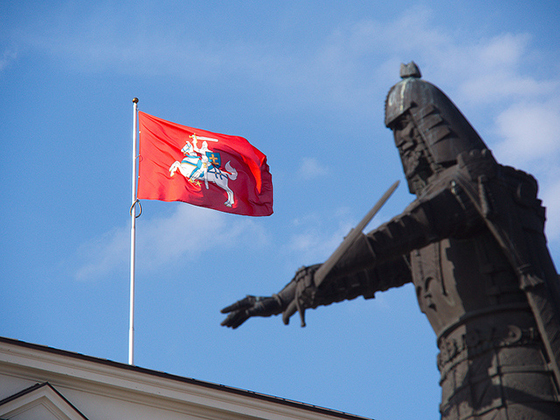
State Flag of Vytis. Photo by Šarūnas Burdulis.
Flag of Latvia
The Flag of Latvia is formed by three horizontal bands: a thinner white one in between of two wider dark red ones. Just like in the Lithuanian case, the Latvian flag was officially adopted from 1918 until the Soviet occupation in 1940. After that, it was readopted again in 1990.
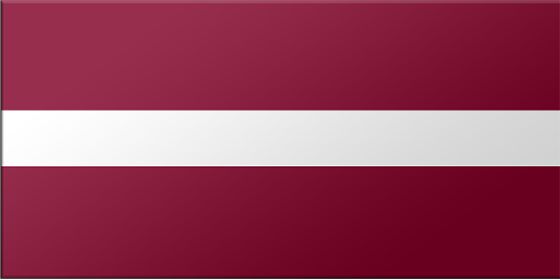
Flag of Latvia. Photo by Steve Conover
There are different interpretations of this flag. One version says that the dark red color represents an abstract concept, the willingness of the brave Latvian people to give the blood from their hearts for their freedom and liberty. Another version offers a more specific explanation: it tells how during a battle against their enemies the Latvian leader was wounded and blood spilled his white shirt. Far from surrendering, the leader took of the shirt and waved it as a flag leading his tribe to victory.
It is said that the Latvian flag is one of the oldest of the world. Latvian tribes used red and white flags already in the 13th century. Varieties of this flag change the shape of the red stripes but never the red and white colors of it. One of the variants shows the red stripes forming a cross over the white background, while in the naval jack, the red stripes form a four pointed star similar to the Union Jack.

Red and white, the colours of the Latvians. Photo by Dita Margarita
Flag of Estonia
The Flag of Estonia is a tricolor one featuring three equal horizontal bands: blue on top, black in the middle and white in the bottom. It is colloquially called by the nickname of “Sinimustvalge”, which in Estonian means literally “Blue-Black-White. As the other Baltic flags, the official adaptation of the flag was in 1918, and then again after the Soviet occupation in 1991.

Estonian Flag. Photo by Jakob Breivik Grimstveit.
Regarding its symbolism, there are different interpretations. A historical interpretation says that the blue represents the concepts of freedom, truth, sky and sea. The black would then symbolize the soil, the lost independence and the dark coasts, and the white the search and fight for a better and brighter future.
The poet Martin Lipps, stating a similar idea than the above explanation, made another interpretation. For Lipp, the blue means the blue sky above the land; the black, the homeland and the fate of Estonians (a pessimist interpretation as he sees the Estonian character dark with worries); and, finally, the white symbolizes for him the “purity, hard work and commitment” of the Estonian people
A third possible (although unlikely) interpretation of the tricolor flag goes as follows: it is just the representation of a typical forest landscape in winter. In this theory, the blue band is the sky; the black one, the line of the dark tall forests in the horizon; and the white, the snow covering the ground.
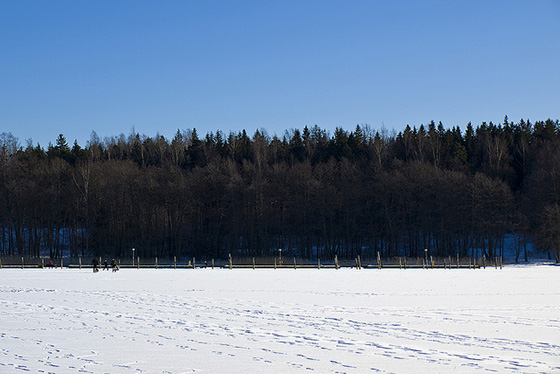
Flag of Estonia spotted in the nature. Photo by Northsky71
There are different variations of the Estonian flag as well. The Flag of the President includes a yellow shield over the tricolor flag. The shield depicts three blue lions. Same shield and background applies to the Flag of the President at the sea, with the only difference that in this variation the right side of the bands is cut by two horizontal white triangles. Finally, the naval jack shows a white background with two different crosses (both blue, but one darker that the other), forming an eight-point star.
Discover everything about the culture of the Baltic Countries in the best possible way: join the next Baltic Run and live an incredible adventure driving from Krakow to Tallinn!

